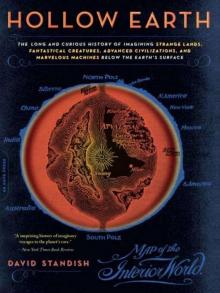Hollow Earth: The Long and Curious History of Imagining Strange Lands, Fantastical Creatures, Advanced Civilizatio 

Genre: Other5
Published: 2007
View: 1972
Read OnlineRead Hollow Earth: The Long and Curious History of Imagining Strange Lands, Fantastical Creatures, Advanced Civilizatio Storyline:
From Publishers WeeklyThe idea that another world exists below the surface of the Earth has captivated science fiction and fantasy writers since the days of Edgar Allan Poe's "Ms. Found in a Bottle" and Jules Verne's Journey to the Center of the Earth. As Standish reveals, the theory has also been promoted by serious (if sometimes slightly off-kilter) scientists, beginning with the eminent Edmond Halley, who theorized that smaller concentric spheres were nested inside the Earth. Standish's approach relies heavily on plot summaries of novels by the likes of Edgar Rice Burroughs, with frequent sarcastic interjections. "Stop him before he describes more!" he cries after one particularly lush passage. Scientists are dealt with in similarly detailed and skeptical fashion. Beneath all the wisecracks, however, Standish seems to have a genuine affection for his assorted crackpots and dreamers, and he provides an amusing tour of their various underground utopias. Unfortunately, the story fizzles at the end, failing to develop the all too sketchy hints that some people out there are still hollow-earth believers—but it's a fun romp while it lasts. 65 b&w illus. (July) Copyright © Reed Business Information, a division of Reed Elsevier Inc. All rights reserved. From The New YorkerTracing the modern history of the belief that other worlds might exist inside our own, Standish begins with the Enlightenment-era astronomer Edmond Halley—remembered widely for his eponymous comet but less so for his theory that geomagnetism can be accounted for by three concentric spheres that rotate inside the globe and sustain their own ecosystems. Halley's conception of the subterranean realm spawned a recurring theme in science fiction (Jules Verne, Edgar Rice Burroughs, and L. Frank Baum all set novels inside the earth), as well as a small but enduring strain of true believers. Standish, who calls the Hollow Earth theory an "idea that was wrong and changed nothing," laces his research with too much boisterous humor, but he has an engaging affection for his cast of fantasists and misguided visionaries. Copyright © 2006 Click here to subscribe to The New Yorkeribe to The New YorkerPages of Hollow Earth: The Long and Curious History of Imagining Strange Lands, Fantastical Creatures, Advanced Civilizatio :